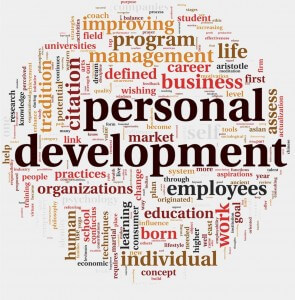
I read an article in a colleague’s newsletter that got me thinking. This may be a little back to the basics, but it is what we do and it is easy in this day of off-the-shelf training programs to let the program, especially one involving technology, take over for us.
June Melvin Mickens of Executive Advantage, LLC says “It never ceases to amaze me that the most snooze-provoking presenters seem to be the most oblivious.” Isn’t it true? These trainers don’t seem to get it, even with people snoring away, or leaving to catch some fresh air, or constantly looking at their agendas to see if they really need this session.
In the Federal government I saw of lot of the same thing. Trainers were not involved in the technical or policy areas. Instead, we had program managers or specialists who knew the subject but not how to make a training session work and certainly not make it memorable, which means the audience hadn’t learned a thing.
Well, let’s do something about it.

One way to solve this problem in a training session is to have a dynamic presenter even if you have to have a subject matter expert (SME) standing by to deliver the more technical goods and answer questions. If you’ve ever seen a military briefing, you’ll notice other officers present; truely, they are not body guards. They are SMEs should a question arise that cannot be answered by the speaker. Having the SME present greatly enhances your credibility and encourages audience involvement, which in turn, keeps audience interested and helps learning take place.

A training session doesn’t have to be boring or received by an audience under duress if we, trainers, remember some of the basics of training and communication: Most important of all is to remember it’s a two-way street and the trainer should be reading his or her audience feedback–even if it is an off-the-shelf product. Add your own perspective, ask questions and provide answers from someone considered an expert from the audience, ask if this, meaning the product is accurate today?
June has three points that are key to remember.
“Make it relevant” — We know the importance of relevancy to workers. They want to learn to do their jobs better, but they have to balance that against their regular requirements. Trainers need to continually tie the workers’ job and the training so it seems worth the workers’ time out of their cubicles or offices or manufacturing floor is worth the inconvenience and the time they have to make up.
“Make it fun” — Give the audience something amuse themselves and others. Encouraging the audience makes the experience more pleasant. Everyone likes to laugh. Some trainers like to use toys and games, I prefer to modify the games to fit the training and to be a good lead in, but that’s just my style.
“Make it happen” — If learning doesn’t take place and sticks… If the audience can’t take it back to the workplace and start using the training, we haven’t done our jobs. I agree wholeheartedly with June that in this day and age talk about what can be done now without more resources or that even reduce the need for some of those resources. To make it relevant and fun is good, but without this step nothing as changed. Use that relevance to point out, while they may not be able to use everything, choose something from the list and you’ll have your audience actually hanging on every word so it can come with something they can use.

Give them a reason to go back and say, “Hey, I learned something today.” That just might make your next training easier.
I find even as a professor I teach my students the same way–even assignments. Sometimes I give them a choice among several. If all have the same result, no harm, no fault, and I am involving them in their own learning. When I give an assignment, I tell them exactly what I am looking for. They understand fully and won’t worry about it because they know exactly what I expect of them. Trainers can do the same thing with their audience. Ask them for input, that keeps them involved in much the same way. And you have bonded with your audience.
—
For more resources about training, see the Training library.
That’s it for me today. Check out my website. I’ll be changing it soon, but for now you can still find links to What I Say, or better yet, check out my e-books available for a paltry sum and will download to any e-reader or computer. Besides my best selling book, The Cave Man’s Guide to Training and Development, I have another book that focuses, not on the kind of training you are probably used, but on training in the world of theatre from an actor/director/critic viewpoint, ActingSmarts on Regional and Local Theatre. I also have another theatre book coming out in the next day or two on what a reviewer of plays should do and answers questions with a series of reviews and articles, ActingSmarts Reviews Regional and Local Theatre. Finally, there is my novel, Harry’s Reality. You’ve seen dystopian novels before, but not like this one…I promise.
Happy Training.
 Sections of this topic
Sections of this topic















